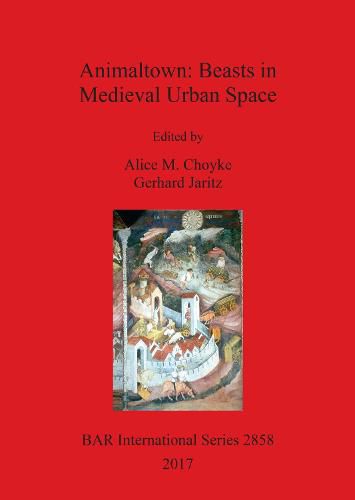Readings Newsletter
Become a Readings Member to make your shopping experience even easier.
Sign in or sign up for free!
You’re not far away from qualifying for FREE standard shipping within Australia
You’ve qualified for FREE standard shipping within Australia
The cart is loading…






This title is printed to order. This book may have been self-published. If so, we cannot guarantee the quality of the content. In the main most books will have gone through the editing process however some may not. We therefore suggest that you be aware of this before ordering this book. If in doubt check either the author or publisher’s details as we are unable to accept any returns unless they are faulty. Please contact us if you have any questions.
Urban space constitutes a place where people and animals live together in close proximity with each other, creating changing landscapes of co-existence, conflict, mutual dependencies and exploitation. The medieval animals found in the articles of Animaltown: Beasts in Medieval Urban Space, appear in text and image, as well as archaeological find materials in the form of butchery waste, kitchen refuse, debris from manufacturing osseous objects, and the objects themselves. This multiplicity of sources sheds light on the ways towns fed themselves, protected themselves and created their personal landscapes and views of themselves through the power of metaphor and symbol involving the array of beasts, great and small, surrounding them. The general theme uniting the papers in this volume is the range of factors influencing the mutual relationship between humans and the animals that surrounded them within the densely built and occupied spaces created by people in towns and their hinterlands. Animals are found as urban symbols, decorative motifs and representations. They appear as key elements in food traditions and meat-processing, economic and trade structures, hygiene and disease, as well as craft activities that exploited a variety of animal products. Beasts of all kinds played many different roles in the lives of people in the Middle Ages, from the highest levels of society to the lowest of the low. Conversely, intimate contact with humans in these environments also shaped the lives and behaviour of both wild and domestic animals in many profound ways, both evident and subtle. The volume will be a valuable addition to the library of anyone interested in the connection between urban animals and people in medieval times.5pt; font-family: Verdana ,sans-serif;mso-bidi-font-family:Verdana’>
$9.00 standard shipping within Australia
FREE standard shipping within Australia for orders over $100.00
Express & International shipping calculated at checkout
This title is printed to order. This book may have been self-published. If so, we cannot guarantee the quality of the content. In the main most books will have gone through the editing process however some may not. We therefore suggest that you be aware of this before ordering this book. If in doubt check either the author or publisher’s details as we are unable to accept any returns unless they are faulty. Please contact us if you have any questions.
Urban space constitutes a place where people and animals live together in close proximity with each other, creating changing landscapes of co-existence, conflict, mutual dependencies and exploitation. The medieval animals found in the articles of Animaltown: Beasts in Medieval Urban Space, appear in text and image, as well as archaeological find materials in the form of butchery waste, kitchen refuse, debris from manufacturing osseous objects, and the objects themselves. This multiplicity of sources sheds light on the ways towns fed themselves, protected themselves and created their personal landscapes and views of themselves through the power of metaphor and symbol involving the array of beasts, great and small, surrounding them. The general theme uniting the papers in this volume is the range of factors influencing the mutual relationship between humans and the animals that surrounded them within the densely built and occupied spaces created by people in towns and their hinterlands. Animals are found as urban symbols, decorative motifs and representations. They appear as key elements in food traditions and meat-processing, economic and trade structures, hygiene and disease, as well as craft activities that exploited a variety of animal products. Beasts of all kinds played many different roles in the lives of people in the Middle Ages, from the highest levels of society to the lowest of the low. Conversely, intimate contact with humans in these environments also shaped the lives and behaviour of both wild and domestic animals in many profound ways, both evident and subtle. The volume will be a valuable addition to the library of anyone interested in the connection between urban animals and people in medieval times.5pt; font-family: Verdana ,sans-serif;mso-bidi-font-family:Verdana’>